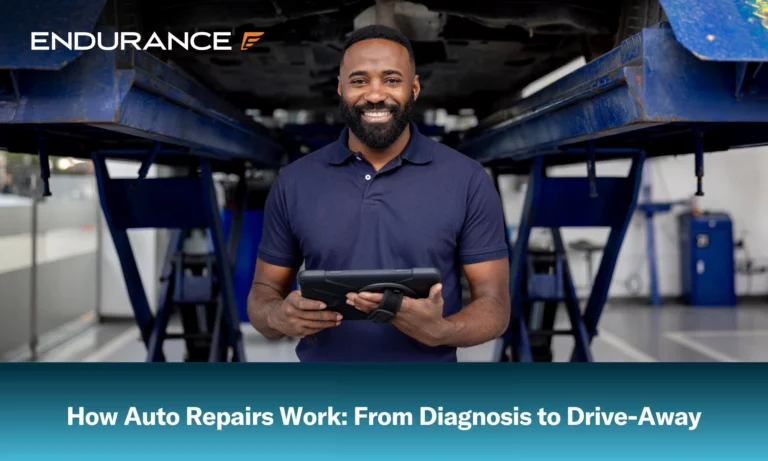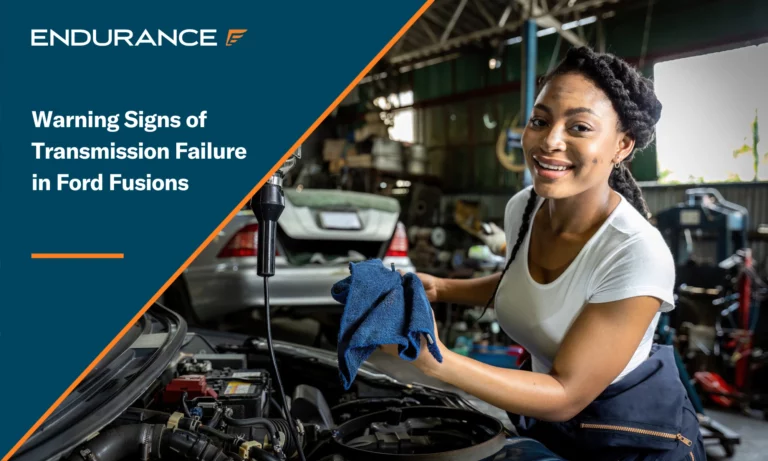Spring Into Action with Danica Patrick: Revamp Your Car’s Health This Season

The arrival of spring signals a time for renewal, fresh starts, and new projects. One effort to add to your task list is getting your car in shape after winter. These same steps will help prepare your ride for the sizzling summer months ahead. Danica Patrick, a pioneering former professional race car driver, understands the importance of regular vehicle maintenance better than most. Her extensive racing experience has given Danica keen insight into maintaining peak vehicle performance.
“From early on in my racing days, I learned that regular maintenance is key to keeping a car performing at its peak,” says Danica. “Just like athletes need to care for their bodies, cars need regular check-ups and maintenance to stay in top shape.”
Danica’s racing accomplishments include Rookie of the Year awards for her performances in the 2005 Indianapolis 500 and the 2005 IndyCar Series. During her initial Indy 500 run, Danica led the field for numerous laps, ultimately finishing fourth. Throughout her IndyCar career, Danica continued to shatter barriers for women in motorsports, including driving for elite teams such as Rahal Letterman Racing and Andretti Autosport. In 2008, she reached another milestone by becoming the first woman to win an IndyCar Series race, triumphing at that year’s Indy Japan 300.
In 2012, Danica made a bold move to NASCAR. That same year, she claimed the pole position at the sport’s crown jewel event, the Daytona 500, setting yet another record as the first American female driver to accomplish such a feat. Her NASCAR days included racing the #10 GoDaddy Chevrolet for Stewart-Haas Racing. Danica continued to compete at NASCAR’s highest levels until her retirement in 2018.
Now, with her racing days behind her, Danica is sharing her top tips for springtime car renewal.
The Importance of Vehicle Health
Ideally, car care should be a year-round effort. However, even if this isn’t the case with your vehicle, spring is the perfect opportunity to focus on its health. Just like you should be going to the doctor for an annual check-up, a spring cleaning effort with your car can spot and treat underlying issues before they turn into more significant problems later.
Danica remarks, “Keeping your car well-maintained is just as important as staying physically fit. These steps help prevent costly repairs and keep you and your passengers safe.”
She reminds car owners that regular maintenance provides numerous benefits, starting with maximizing vehicle lifespan. Other advantages include improved fuel economy, enhanced performance, and increased reliability. Ultimately, keeping a car well-maintained preserves resale value and saves money.
Pro-active maintenance has always been a top priority for Danica, thanks to her experience as a professional driver. “In racing, success comes down to the fine details,” she says. “A car that’s perfectly dialed in can be the difference between reaching the podium or not.”
While checkered flags and 200 mph speeds probably aren’t part of your daily driving, taking Danica’s maintenance advice to heart can keep your car ready for the roads ahead.
Spring Cleaning Checklist: 7 Useful Tips
Danica notes that tackling spring car cleaning doesn’t require fancy tools or mechanical skills. Here’s her list of simple tasks to help refresh your ride for Spring. She also offers guidance on essential maintenance activities that are a natural part of the seasonal cleaning process:
- Wash and Wax the Exterior: Start this seasonal renewal by thoroughly cleaning your car’s exterior. Wash away the build-up of winter grime, paying attention to the undercarriage, wheel wells, and other hidden spots. Pay attention to the openings along the hood and trunk or cargo area. Once the painted surfaces are dirt-free, apply a clay bar across the exterior to remove contaminants. Follow-up with fresh wax for protection and luster.
- Clean and Treat the Interior: A clean cabin complements a shiny exterior. Vacuum debris from the carpets, floor mats, seats, and storage cubbies, being sure to get into crevices, cupholders, and door jambs. Apply stain remover to any carpet, mat, or upholstery spots, making sure to use a car-safe solution. Use a leather or vinyl conditioner on non-fabric upholstery.
- Check Fluid Levels: Top off fluids for the brakes, cooling system, windshield washer, and transmission (if your car has this capability). Danica emphasizes the importance of reviewing the owner’s manual to confirm how to add fluids correctly. In addition, she recommends following the manufacturer’s guidance on using the correct fluid types and following the required change intervals.
- Change the Oil: The most critical fluid change involves engine oil. Danica advises using high-quality synthetic oil and premium filters and not exceeding the manufacturer-recommended oil change interval.
- Inspect Wipers and Filters: Take a few minutes to examine the windshield wipers and replace worn blades. If you can’t remember the last time you did this, replacements are likely needed. Also, check the engine and cabin air filters to see if they need to be switched out.
- Check Tire Pressure: Proper tire inflation maximizes fuel efficiency, enhances tread life, and improves stopping power. Tire pressure requirements are in the owner’s manual or on a sticker on the driver’s door jamb.
- Inspect the Battery and Terminals: Clean any corrosion or build-up accumulated on the battery terminals and ensure the cable connections are tight.
Addressing Common Post-Winter Issues
Danica notes that while racecars encounter more predictable environments, ordinary automobiles are exposed to a full range of climates, including winter’s wrath. Spring is the time to focus on crucial maintenance areas that may not have gotten proper attention during the colder months.
- Check Hoses and Belts: Extreme temperatures can damage rubberized components like hoses and drive belts. Take a few moments under the hood to inspect for cracking, other deterioration, and looseness, especially if your car has over 50,000 miles.
- Address Outstanding Issues: With the winter past, now’s the time to look after any nagging mechanical problems or unusual noises. Have any areas of concern inspected by a professional mechanic while they are still minor issues.
- Test the Battery: Extreme cold is not a friend to a car battery, especially one that is older (most batteries last three to five years). Have the battery tested and replace a failing unit before it leaves you stranded. The health of the battery is so important for reliable starting, so check it first thing after winter.
- Inspect the Tires: Tire maintenance involves more than checking pressure, which can be affected by fluctuating temperatures. Examine the tires for inconsistent wear (a sign of misalignment or suspension issues) and any physical damage to the tread or sidewall. Your tires are the only contact with the road, so you want them in optimal condition. Keep up-to-date on tire rotations, too.
- Check the Brakes: Salt, water, and grime accumulation over winter can accelerate brake wear. Inspect the brake pads and rotors, and test the brake fluid for moisture contamination. The calipers may need lubrication.
- Inspect for and Treat Rust: Snow, ice, and road salt promote the development of rust, particularly on unprotected metal or damaged painted surfaces. The onset of warm weather doesn’t stop rust, either. Treat any small rust spots by sanding away the corrosion, applying a rust inhibitor, and then covering with touch-up paint. Larger or more complex trouble areas should be handled professionally.
The Role of Extended Warranties
The effects of winter on a car can be more than maintenance requirements. It’s not unusual for plunging temperatures, snow, and ice to push a vehicle past its breaking point. Car owners can be protected against surprise repair bills with an extended warranty, like the levels of coverage offered by Endurance Warranty Services. An extended warranty, more accurately called a vehicle service contract, takes away the stress of unanticipated expenses, providing peace of mind after the factory warranty has expired.
Endurance offers a variety of coverage options to suit different budgets and vehicle needs. Below is an overview of the different coverage plans. Review our sample contracts for more details.
Powertrain Protection
Engine and transmission repairs are usually the costliest. A powertrain warranty covers the lubricated components of these systems, as well as water pumps, lubricated drive axle parts, turbochargers, and other vital elements. Endurance expands on powertrain protection with a Secure Plus upgrade covering air conditioning, brakes, select electrical components, steering, and hybrid systems.
Expanded Coverage
Car owners concerned about repair bills beyond essential systems turn to Endurance’s Superior protection. It’s the company’s highest level of stated component coverage. This means more parts are mentioned explicitly in the extended warranty (or auto protection plan) than in lower-level programs. For instance, the cooling system, suspension, fuel system, and transfer case are among the protected components.
Exclusionary Protection
Endurance flips the script on an extended car warranty with its Supreme plan, an exclusionary coverage offering. Unlike stated coverage, which details precisely what the extended warranty coverage pays for, an exclusionary program protects every vehicle component unless exclusions are explicitly mentioned in the agreement. This protection is similar to a new car warranty.
Recognizing that some car owners have additional protection needs, Endurance has programs for:
- High-mileage vehicles
- Select luxury models
- Commercial-use automobiles.
- Modified vehicles
- High-tech automotive electronics
Advantages of Endurance Warranty
Endurance offers flexible and convenient auto protection plans. You can take your car to any certified mechanic and deal with folks who make the process smooth. There are other perks, including:
- Nationwide Coverage: Endurance plan holders can get help with covered auto repairs from any ASE Certified mechanic or repair facility, so you don’t need to go to the dealership (unless you want to). This feature is ideal if a mechanical breakdown occurs while on a road trip or far from home.
- Money-Back Guarantee: Endurance provides a 30-day money-back guarantee during which you can review coverage more closely and receive a full refund if you’re unsatisfied. Afterward, you may cancel anytime for a prorated refund (see the plan’s terms for details).
- Roadside Assistance and Trip Support: All Endurance customers can access 24/7 roadside assistance (with towing coverage and lockout assistance), rental car reimbursement, and trip interruption coverage.
- Endurance Elite Benefits: Every Endurance plan includes a free year of Elite Benefits. Just pay a small enrollment fee for tire coverage (up to four tire repairs or replacements due to road hazards, key fob replacement, collision discounts, and total loss protection.
- Endurance Smartphone App: All Endurance customers can access an exclusive smartphone app that provides convenient access to plan documentation, claim processing, and live customer support.
- Flexible Payment Options: Endurance plans can be paid for upfront or via monthly payments, ensuring getting coverage isn’t a hassle or strain on the budget.
Preparing for Spring and Beyond
Use the changing of seasons as motivation to give your car some TLC. Take time this spring to assess its current condition and identify any problem spots before they grow into bigger headaches down the road. A little planning and prevention go a long way. Approach car care with the same care you do for your health, and you’ll keep your vehicle running smoothly for the long haul.
Attention to detail also matters. Here are some of Danica’s extra spring car care tips for preparing your car for the months ahead.
Spring Car Maintenance Checklist: 6 Crucial Steps
- Clean the Headlights: Yellowed or faded headlights impact nighttime visibility. Headlight restoration kits make cleaning up hazy headlamps a simple DIY project.
- Detail the Wheels: Scrub clean the wheels to remove brake dust and road grime build-up. Follow up with a wheel protectant that will make future cleaning easier.
- Clean Inside the Tailpipe: Use a pipe brush (on a cold tailpipe) to remove soot and other debris accumulated over the winter. This effort is often overlooked but can transform a car’s looks. While down there, inspect the exhaust system for loose fittings, rust, or cracks.
- Inspect the Windshield: Tiny windshield chips can turn into large cracks. Avoid any issues with windshield repairs or replacement.
- Lubricate Latches and Hinges: Use a spray lubricant to latch mechanisms and hinges to keep the hood, trunk, and doors operating smoothly.
- Touch-up Paint Chips: Use touch-up paint to fix minor paint imperfections and chips to maintain your car’s appearance and ward off rust
Get Ready for the Road with Endurance
Discover all that Endurance Warranty has to offer. Request a FREE quote or check out our eStore for instant price and plan information. Personalized help is also just a call away at (800) 253-8203. Speak with an Endurance advisor to find an auto protection plan that matches your needs and budget.
Read more on the Endurance blog for expert-written articles covering car reviews, automotive news, DIY tips, maintenance advice, vehicle protection plan insights, and more.













The Endurance blog is powered by a team of automotive experts, customer care professionals, and industry writers dedicated to helping drivers make smarter decisions about vehicle protection and ownership. From coverage insights to car care advice, our content is designed to inform and support every stage of the driver journey. For press inquiries, please contact [email protected].